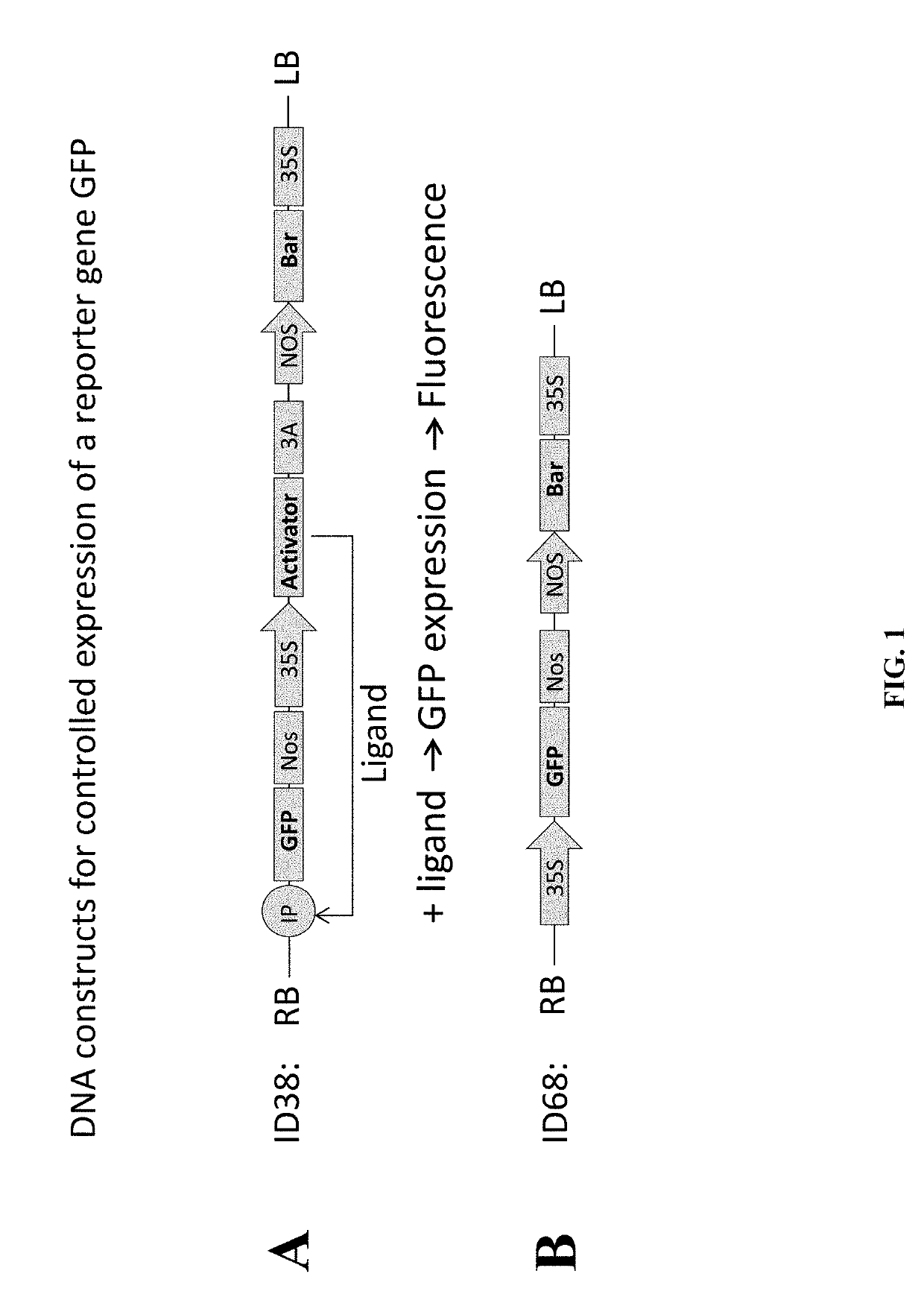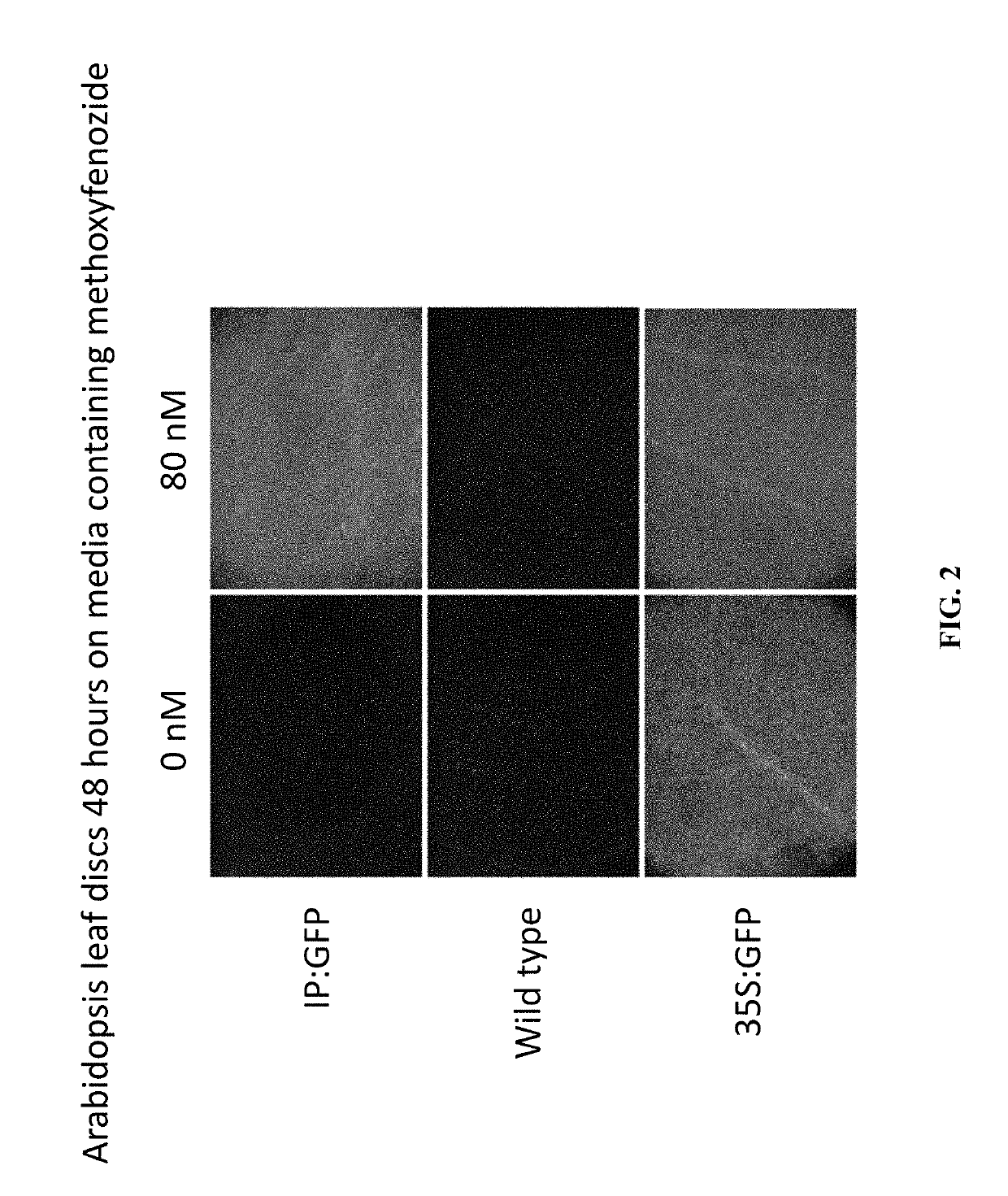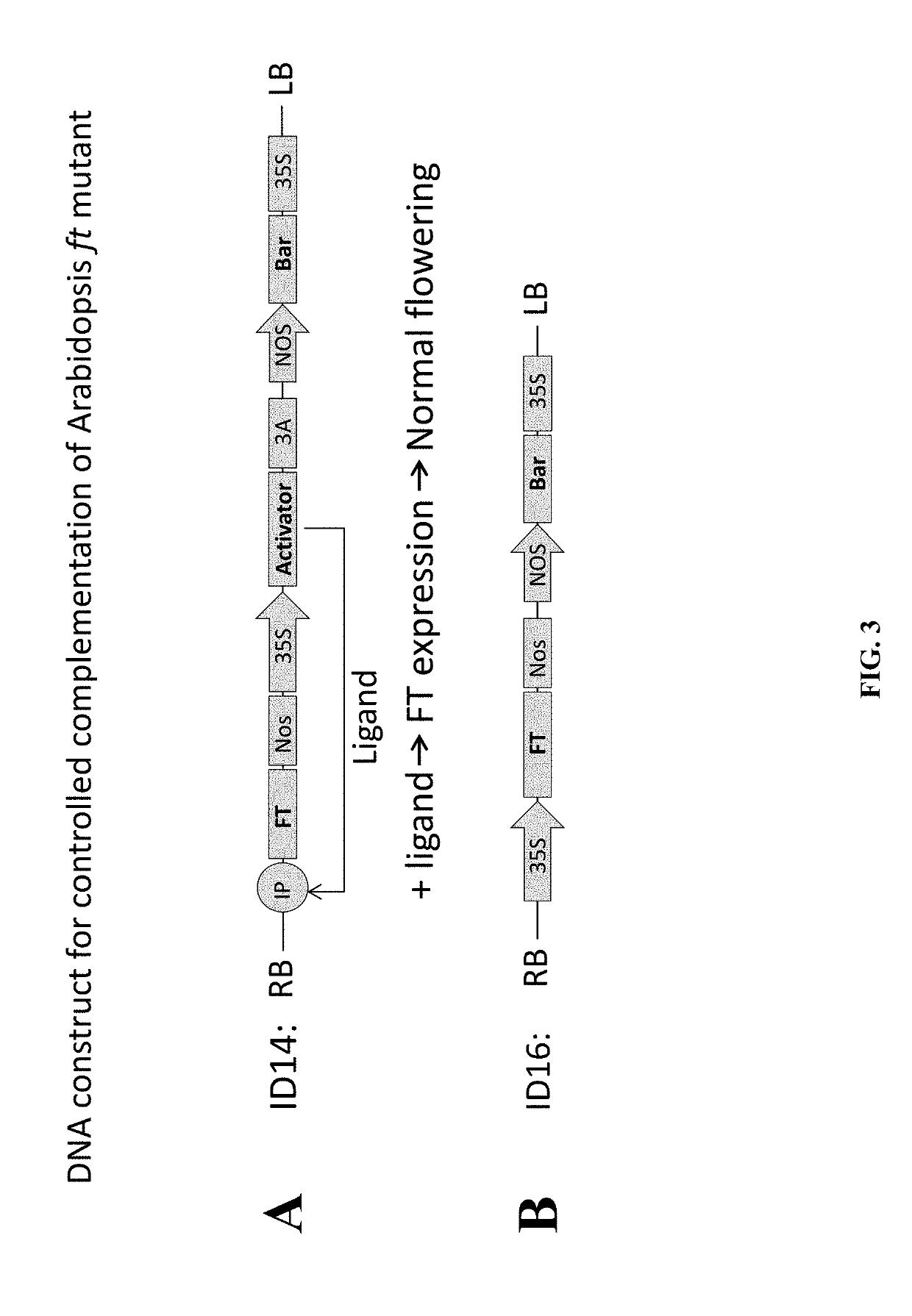Control of phenotype in plants
- Summary
- Abstract
- Description
- Claims
- Application Information
AI Technical Summary
Benefits of technology
Problems solved by technology
Method used
Image
Examples
example 2
Transform Arabidopsis Mutants to Achieve Inducible Restoration of Wild-Type Phenotype:
[0428]A. FT Mutant
[0429]DNA construct ID14, shown diagrammatically in FIG. 3A, is similar to that described in Example 1, except that the GFP is replaced with a wt FLOWERING LOCUS T (FT, AT1G65480) gene and may be used to transform a homozygous ft late flowering Arabidopsis mutant. Transgenic FT gene may similarly be turned on by applying methoxyfenozide ligand to give a dominant phenotype restoring late flowering to normal flowering. The advantage of using the late flowering ft mutant is to simplify phenotype analysis. The flowering time of transgenic plants can be compared to wt and ft plants grown side by side under the same long day or short day condition with or without applying methoxyfenozide ligand. DNA construct ID16, shown diagrammatically in FIG. 3B, containing FT under the direct control of CaMV-35S promoter may be used to transform ft mutant Arabidopsis to produce positive control plan...
example 3
[0436]Targeting genes in plants by inserting EcR-based gene switch to control a phenotypic trait. One could also take advantage of the recent CRISPR gene targeting technology (Li et al. (2015) Plant Physiol. 169:960-970) to introduce inducibility to a plant gene. For example, a flowering control gene such as the FLOWERING LOCUS T (FT) florigen gene may be targeted by inserting EcR-based gene switch system between the FT promoter and coding sequence of the FT gene. The interruption of the key flowering gene FT will likely create a late flowering mutant that can be restored by turning the same FT gene expression back on by the EcR-based gene switch when appropriate ligand is applied. The native FT promoter is appointed to express the activator (AP) to mimic the natural expression profile of the FT gene and minimize potential pleiotropic effects from the overexpression of FT if using a strong constitutive promoter such as 35S.
[0437]A DNA construct, such as shown diagrammatically in FIG...
example 4
Targeting Genes in Plants by Inserting an Enhanced EcR-Based Gene Switch to Control a Phenotypic Trait.
[0440]In another embodiment using CRISPR gene targeting technology, a DNA construct shown diagrammatically in FIG. 7, containing both an EcR-based gene switch using a strong 35S promoter and CRISPR elements (Cas9+gRNA) targeting the FLOWERING LOCUS T (AT1G65480) gene is transformed into wt Arabidopsis. The only difference between the two DNA constructs in FIG. 6 and FIG. 7 is that the latter has the 35S promoter expressing the Activator protein. CRISPR mediated gene targeting through homology directed recombination (HDR) places the 35S:Activator+IP elements between the FT promoter and its coding sequence to create an insertional mutation of FT gene that leads to a late flowering phenotype. Other components of the DNA construct including the Promoter:Cas9+gRNA and Nos:Bar expression cassettes will not be integrated at the FT locus. The 35S promoter is appointed to express more EcR-b...
PUM
| Property | Measurement | Unit |
|---|---|---|
| Amphiphilic | aaaaa | aaaaa |
| Electrical resistance | aaaaa | aaaaa |
Abstract
Description
Claims
Application Information
 Login to View More
Login to View More - R&D
- Intellectual Property
- Life Sciences
- Materials
- Tech Scout
- Unparalleled Data Quality
- Higher Quality Content
- 60% Fewer Hallucinations
Browse by: Latest US Patents, China's latest patents, Technical Efficacy Thesaurus, Application Domain, Technology Topic, Popular Technical Reports.
© 2025 PatSnap. All rights reserved.Legal|Privacy policy|Modern Slavery Act Transparency Statement|Sitemap|About US| Contact US: help@patsnap.com



